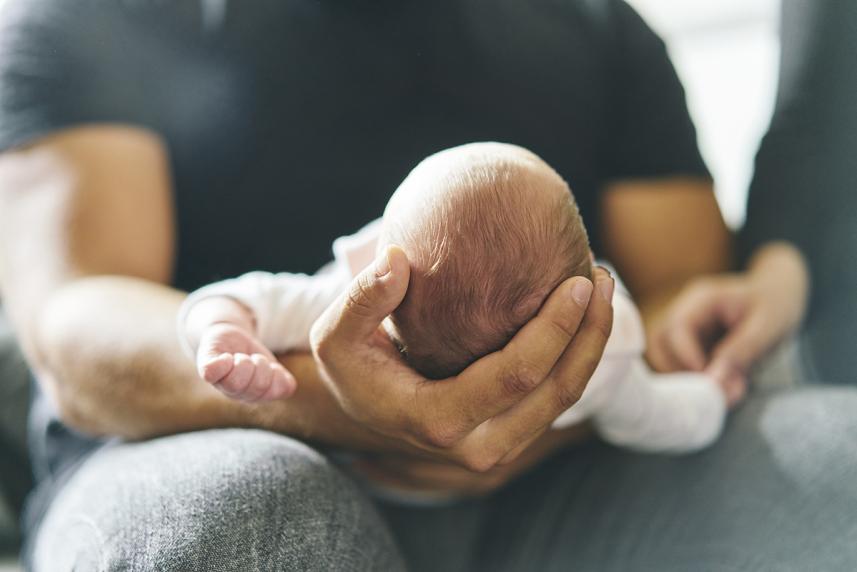
Compare our prices. You might be surprised by how much you can save by transferring to the Optum Store.

This flaky skin condition is common in new babies. Learn the signs and the best ways to treat it.
Your precious baby is perfect from head to toe. And then one day, you notice her head is actually not so perfect. Her scalp looks crusty and flaky. It also has yellow or white scaly areas and some redness here and there.
Don’t panic. Most likely, your baby has a very treatable skin condition known as cradle cap. Cradle cap affects 7 out of 10 babies and usually starts in the first 2 to 6 weeks of life, says Jenna Scholnick, MD. She’s a pediatrician at the Children’s Hospital at Montefiore Medical Center in New York City. And while cradle cap looks alarming, your baby usually doesn’t feel a thing.
Signs of cradle cap include:
Here’s why cradle cap happens, how to tell if your little one has it — and what to do next.
“The cause of cradle cap is not clear,” Dr. Scholnick says. “But we know that it’s not contagious, and it’s not caused by poor hygiene.”
Maternal hormones may be a culprit. “These hormones can cause too much oil production in the glands and hair follicles. This causes old skin cells to stick to the scalp,” Dr. Scholnick explains. “Another factor may be a yeast that grows along with bacteria on the scalp.”
Yes, it might look super uncomfortable. But cradle cap typically won’t bug your baby. “It bothers grown-ups more than kids,” says Nathan Price, MD. He’s a pediatric infectious disease specialist at the University of Arizona in Tucson.
Sometimes, cradle cap can be confused with another skin condition called atopic dermatitis. But atopic dermatitis causes itching, and cradle cap does not, according to the Mayo Clinic.
(Baby skin problems are common. Read our guide to treating diaper rash, too.)
Your baby is at a slightly higher risk of cradle cap if eczema runs in your family. “Research has found that babies who get cradle cap often have family members with eczema and asthma,” Dr. Scholnick says.
Shop for all your baby and new-mom needs on the Optum Store and have products shipped directly to your front door.
You can treat cradle cap at home. Here are doctor-approved tips that can help.
Try a home remedy. Rub mineral oil, vegetable oil or olive oil onto your baby’s head, says Dr. Price. “The oil softens it, and then you can brush or comb it out gently.” White petrolatum (such as Vaseline or Aquaphor) or baby oil works, too. These will help break up the scaly dry skin. Then, gently remove the scales with a soft toothbrush or a special cradle cap comb.
Wash your baby’s hair. Once you comb out the scales, use a gentle baby shampoo to wash your baby’s hair each day.
Have some patience. Another plan for treating cradle cap is to take a wait-and-see approach. “One option is just to do nothing, and the cradle cap will disappear on its own,” Dr. Price says. “If it’s a small patch, you can just leave it alone.”
Don’t use over-the-counter dandruff shampoos. Some dandruff shampoos contain salicylic acid. This is not recommended for babies because it can be absorbed through the skin, according to the Mayo Clinic. “There are special over-the-counter cradle cap shampoos,” Dr. Scholnick says. These are fine to try. Just be careful not to get the shampoo in your baby’s eyes.
If your baby’s scalp looks inflamed, call your pediatrician. He or she might recommend an antifungal medication such as 2% ketoconazole or a topical steroid such as 1% hydrocortisone cream.
You should also call your doctor if:
(P.S. As a new mom, you need to take care of your own health, too. Check out our postpartum health guide.)
Most babies outgrow cradle cap by the time they’re 3 or 4 months old. And rest assured: In the long run, cradle cap does not hurt your baby’s skin or hair growth.

Compare our prices. You might be surprised by how much you can save by transferring to the Optum Store.
Additional sources
Cradle cap overview: Mayo Clinic (2020). “Cradle Cap”
Facts about cradle cap: American Academy of Pediatrics (2009). “Cradle Cap”